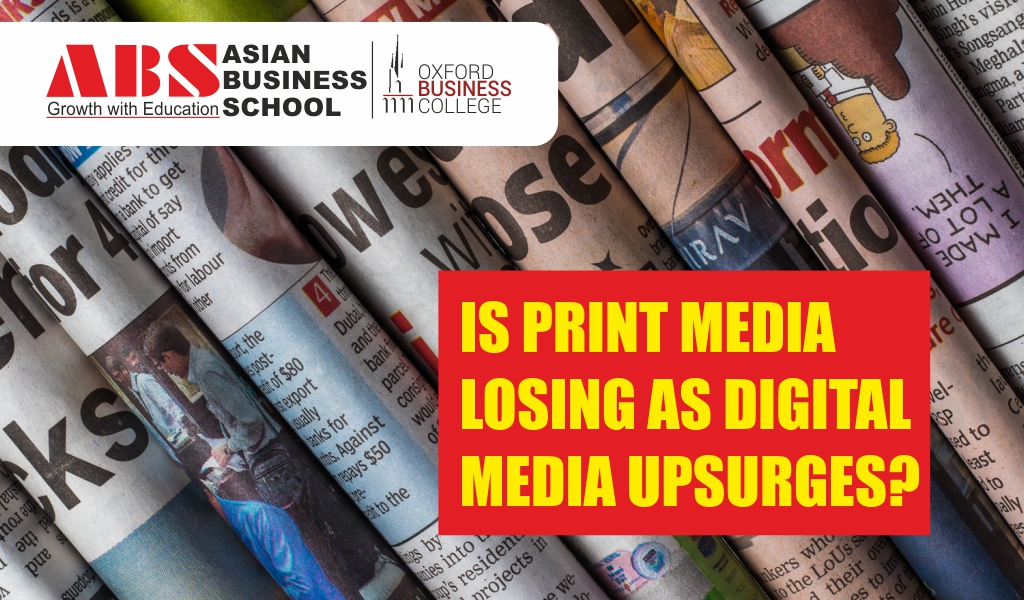“The media”, in the words of Malcolm X, “is the most powerful entity on earth. They have the power to make the innocent guilty and to make the guilty innocent, and that’s power. Because they control the minds of the masses”.
Media has been ruling since time immemorial. Mass media refers to various platforms, which can be used to communicate and interact with a large number of audiences in different languages – the frontrunners being print and digital.
Early Print & Digital
Print media is known from the days of Julius Cesar when ‘Acta Diurna’ came into being. It has been dominating the media and communication industry in the form of newspapers, magazines, booklets and brochures, house magazines, periodicals or newsletters, direct mailers, handbills or flyers, billboards, press releases, and books. Nevertheless, change is the only constant and with digital slowly building up a solid user-base over the years, a question mark on the sustainability of print arose.
As we all know, digital media is created, modified and distributed on digital electronic devices. For many of us, it may be difficult to believe, but only 34 years back, in 1986, we had as little as 1 % of the total media storage capacity in digital form. This number rose to 94 % in 2007, which best illustrates the speed at which digitalization came about. In a relatively short period of time, the Internet has had a remarkable influence on almost every facet of our lives. This evolution of media and communication has not just evolved more with each passing day but has also revolutionized the way individuals and businesses operate today.
The Debate & Trends
The greatest advantage that print has over digital is its credibility. Print media is more trustworthy because once the news is published, it cannot be deleted or even modified. However, for most of us today, the day begins and ends with screens. The print is just a soft breeze that comes by to give us a digital detox time. When we read newspapers, there are no distractions from numerous clickable advertisements and pop-ups. That makes the consumption and comprehension of the news more deep-down.
In a country like ours, many areas have limited or no access to the internet. For them, print media is a blessing in disguise. But, when the debate relates to the statistics of literacy rate – digital scores a point, since radio and television do not require literacy and readability skills.
The current trends show that most newspapers and magazines are turning to their digital version and several online news websites are bringing their print versions. This is quite a mix-bag of ways to reach more consumers and to establish credibility. However, in this fast-paced world infected by an extreme paucity of time, a two-way communication that digital media offers, make news and information interactive, engaging, and interesting. With a faster turnaround time and instant updates, digital keeps us more streamlined. This makes it easy to spread important news among the public.
Nonetheless, as anyone can easily generate content for digital media, fake news is on the rise. As a result, unless they are famous and have a good name, digital media platforms are not being trusted by the public. In this respect, print media win hands down.
Who stays longer?
True, news is now being consumed in little digital packets. While digital boasts of a solid user-base today, print media has also witnessed healthy growth in terms of readership. Both have their pros and cons and will surely see robust growth in the coming years with their respective consumers. In fact, with increasing literacy rates, print is acquiring more users. The print is certainly not losing its sheen, but it will have to diversify, experiment and explore more opportunities to remain in the rat race. Therefore, we can say that print and digital media are co-existing quite happily for now. It is for undercurrents to decide who sustains in the long run.
Acknowledging the growing importance of ‘Digital Marketing’ as one of the most useful and essential skill for any management professional these days, Asian Business School (ABS) in collaboration with NIIT – the multinational training company which offers training & development programs to corporations, institutions & individuals in Digital Transformation & IT – is offering an Executive Certification in Digital Marketing program along with its regular flagship PGDM Program that would enable the students to understand how digital marketing can help in the growth of a business.
Some of the programme learning outcomes of this Certification include getting a clear understanding of the fundamentals & importance of Digital Marketing; learning how to effectively manage social media, online advertising & marketing campaigns; understanding the various methods of promoting business online; driving the new traffic to a website while improving online conversion rates; understanding how digital marketing can help grow a business, domestically and internationally; creating and developing effective and targeted email marketing campaigns that aligns with business goals; understanding the concept of Inbound Marketing Vs Outbound Marketing; measuring and analyzing the visitor traffic to a website to continuously develop and improve digital marketing; understanding the concept of Search Engine Optimization in detail; getting a clear understanding of YouTube Marketing, Affiliate Marketing, Google Analytics, Google AdWords and much more.
Thus, apart from enabling the students to learn how to analyze the online data and various other aspects related to it, this certification would open up a world of new career opportunities for the students!


